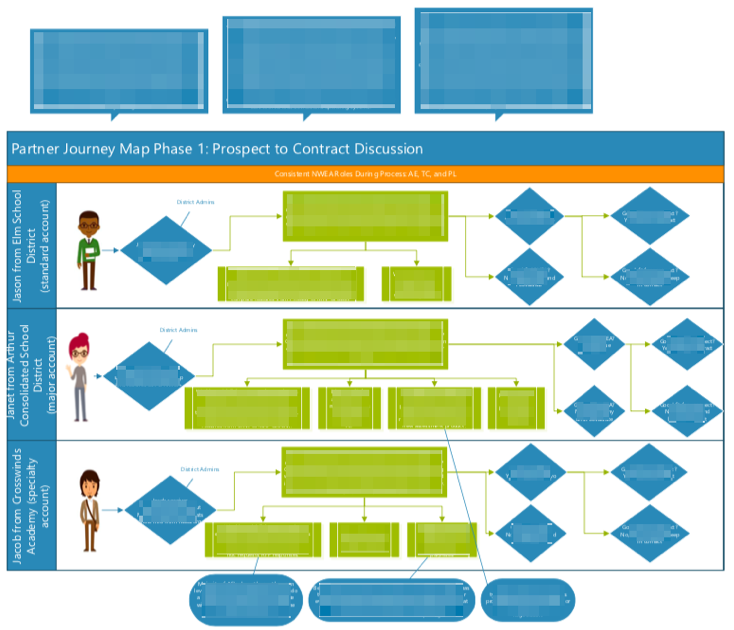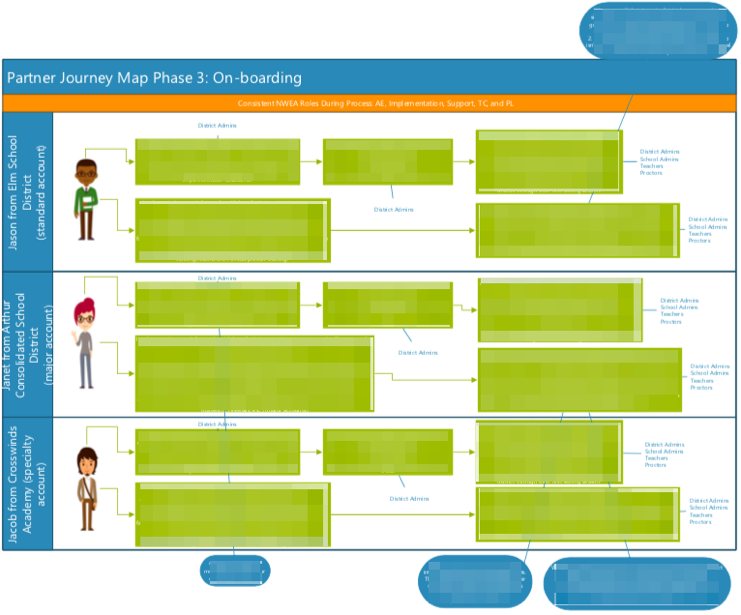Journey Maps and Personas
Overview
NWEA lacked a clear, interconnected visual of the customer journey from pre-sales through the first term of product usage. Teams operated in silos, focusing on their own processes without understanding how a decision made during the sales cycle might affect the team that onboards the new customer. The goal of the project was to create visibility into the customer journey and identify opportunities to collaborate better, enhancing the customer and employee experience.
Biggest Challenge
Finding the balance between too little and too much information was not easy. During the process of synthesizing information, I consulted with several folks within the Product Management department and our User Experience team to learn what level of information would be helpful and actionable. These conversations not only taught me new skills but also allowed me to present my findings to teams that significantly influenced future development prioritization for product enhancements.
Text is intentionally blurred for proprietary reasons.
Legend
Blue diamonds = decision points
Green square = interactions with customers and NWEA staff
Blue ovals = pain points and opportunities
Blue dialogue bubble = persona story
The Approach
Personas were created to anchor concepts to characters that resembled true customers or partners, as NWEA called them. Once the personas (Jacob, Janet, and Jason) were created, interviews occurred with various staff members across sales, services, and professional learning. During the interviews, a series of questions was asked across larger topics.
Explain your daily work and what it would look like to work with Jacob, Janet, or Jason (various different-sized accounts, unique needs, etc.) to find differences and commonalities across customer segments.
Could you explain what your most significant pain points are working with your current processes and procedures and internal teams?
Explain what your and your customer’s most significant pain points are during the pre-sales, contract signing phase, onboarding, and the first term using the product.
The information was gathered from 20 individuals, synthesized, and added to a journey map for the personas, highlighting the processes, pain points, and opportunities.
Outcomes
Had a better understanding between sales, services, and professional services on how team processes, procedures, and collaboration could occur. Information gathered from the journey maps and personas laid the foundation for the work used when the services department was exploring new service offerings. The outcomes were more informative and provided insight into making more intentional, informed decisions rather than experiential gut feelings. Personas became more prominent within the organization in all lines of business, and journey mapping was more common outside of marketing, user experience, and product management.




